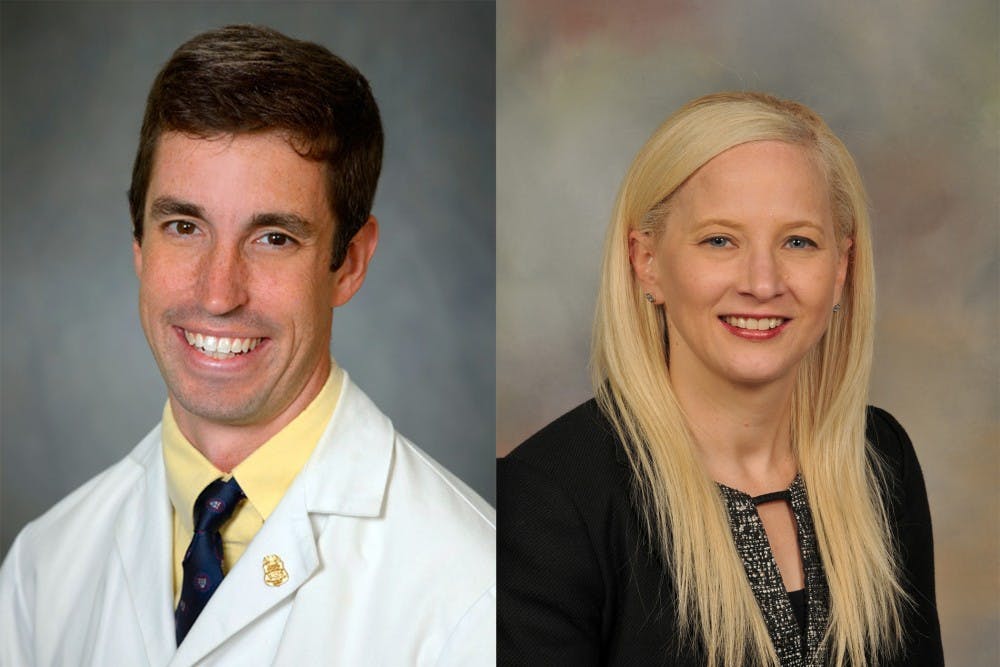Two Penn doctors have won an award from the American Academy of Dermatology for their collaboration to treat a patient with a rare case of leprosy.
Carrie Kovarik and Keith Hamilton, doctors at the Perelman School of Medicine and the Hospital of the University of Pennsylvania were recognized as Patient Care Heroes in February. The doctors, who also teach at Penn, teamed up to help treat a patient with leprosy, using both Kovarik’s dermatology specialty and Hamilton’s infectious disease expertise to cure the patient.
"Treating leprosy is a very challenging undertaking and there are always adverse reactions to treatment," Hamilton said. "You're always walking a fine line between therapeutics and toxicity. So during this case, as with many others, you're always having to evaluate, re-evaluate, adjust, and readjust treatment based on the patient's response."
In order to treat leprosy, a patient usually has to take antibiotics for around two years, and for some cases, their immune system has to be suppressed to avoid collateral damage, Hamilton said.
In this case, the patient contracted leprosy from traveling outside of the United States and was referred from a hospital outside of Penn's system. He traveled to Philadelphia from Delaware, with members of his family, Kovarik said.
Leprosy is an infectious disease that starts out as a bacterial infection and affects the skin and the nerves. According to the Centers for Disease Control and Prevention, only 150 to 250 cases are reported in the United States each year, and most people contract the disease from traveling.
"Those cases that are acquired in the United States, many of these are people that have contact with armadillos because armadillos can be infected with leprosy as well,” Hamilton said.
The case was referred to Hamilton, and when he learned the patient had leprosy, he immediately sought the help of a dermatologist to control the body's immune system response.
RELATED:
Penn Medicine researchers find five new genes that increase risk of Alzheimer's disease
Penn Medicine launches $10 million spine center at Pennsylvania Hospital
“We have to find that balance with treating the infection as well as decreasing the immune response,” Hamilton said. “And dermatologists have an expertise, much more than we do in infectious diseases, using medications that help modulate or suppress the immune response in cutaneous or skin diseases.”
Kovarik was then called onto the case because of her vast experience in working on dermatology cases internationally.
“I worked in Peru for many months and saw a lot of leprosy patients there,” Kovarik said. “I walked in and just as soon as I saw the patient I knew that he had lepromatous leprosy," referring to a specific form of the disease.

Hamilton also pointed to the strong role that other healthcare professionals played in the case, such as a pharmacist that provided the vital medications necessary to treat leprosy, which are not readily available in the United States and sometimes require special approval.
“We also have a wonderful team beyond just the physicians, of pharmacists,” Hamilton said. “As well as nurses that provide support and care and access to these medications.”
The main focus of the Patient Care Heroes Award is to encourage collaboration among dermatologists and other physicians, said George J. Hruza, President of the American Academy of Dermatology.
“We didn't expect to get this much attention, but we don't feel like heroes, we feel like we were just doing our job,” Kovarik said. “But what we really want the message to be for other physicians is that communication with other physicians can really help in patient care.”









